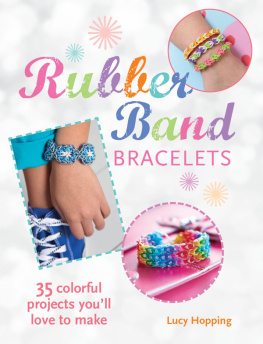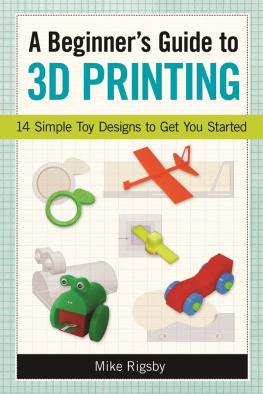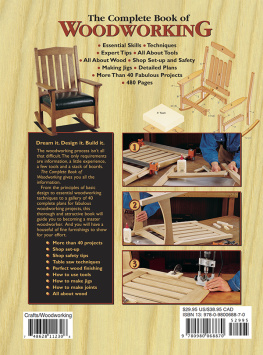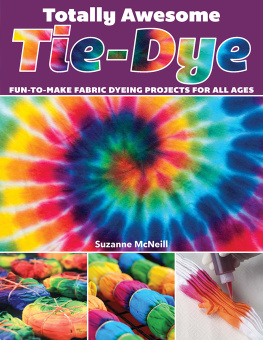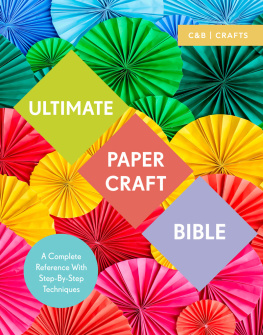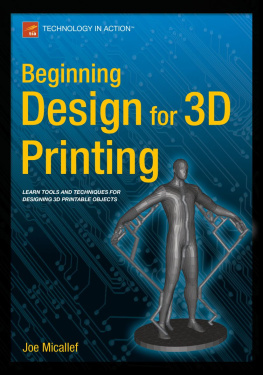


THE RUBBER
STAMPERS
BIBLE
Franoise Read


A DAVID & CHARLES BOOK
David & Charles is a subsidiary of F+W (UK) Ltd.,
an F+W Publications Inc. company
First published in the UK in 2005
Copyright Franoise Read 2005
Distributed in North America
by F+W Publications, Inc.
4700 East Galbraith Road
Cincinnati, OH 45236
1-800-289-0963
Franoise Read has asserted her right to be identified as author of this work in accordance with the Copyright, Designs and Patents Act, 1988.
All rights reserved. No part of this publication may be reproduced, stored in a retrieval system, or transmitted, in any form or by any means, electronic or mechanical, by photocopying, recording or otherwise, without prior permission in writing from the publisher.
The designs in this book are copyright and must not be made for resale.
A catalogue record for this book is available from the British Library.
ISBN-13: 978-0-7153-1850-8 hardback
ISBN 0 7153 1850 0 hardback
ISBN-13: 978-0-7153-1851-5 paperback
ISBN 0 7153 1851 9 paperback
Manufactured in the United States of America by CJK Print Possibilities
for David & Charles
Brunel House Newton Abbot Devon
Commissioning Editor Fiona Eaton
Editor Jennifer Proverbs
Senior Designer Lisa Wyman
Production Controller Jen Campbell
Project Editor Jo Richardson
Visit our website at www.davidandcharles.co.uk
David & Charles books are available from all good bookshops; alternatively you can contact our Orderline on (0)1626 334555 or write to us at FREEPOST EX2 110, David & Charles Direct, Newton Abbot, TQ12 4ZZ (no stamp required UK mainland).
This book is dedicated to my mum and dad Claudine and Don. Their love and support is second to none. I could not have completed this book without their constant encouragement and help. My love to you both.
Contents
Welcome to the World of Rubber Stamping! 4
Rubber stamping is an amazingly simple yet versatile craft where you can transform the ordinary into the extraordinary. Stamps provide you with ready-made images, without the need to be able to draw, but from there you can explore and express your creativity in how you use and apply your stamps. Let the stamps work while you focus on developing your own style. Stamping is not only fun but therapeutic in these high-speed days. However, beware its also addictive. Once you start, you wont be able to put those stamps down! Working your way through this step-by-step guide will be just like taking a professional workshop, but from the comfort of your own home, at your own pace. The opening section covers the essentials in preparation for the inspirational projects each in turn introduces and demonstrates a further technique, as stepping stones in the creative process. For more experienced stampers, these projects provide the opportunity to brush up their skills and to extend their artistic scope and expertise.

The Origins of Stamps
Rubber as a commodity has been around for hundreds of years. However, it was not until the process of vulcanization (hardening) was discovered by Charles Goodyear that a way ahead was found for a multitude of practical applications for rubber stamps being one. Metal printing stamps preceded rubber varieties, and the actual source of the first rubber stamp is still a mired mystery. Early rubber stamps were marking devices such as those we still see in banks, post offices and libraries, and were mainly for commercial use, although the artist Pablo Picasso was partial to employing these stamps in his collages. The birth of modern rubber stamping, as we now know it, took place in the USA at the beginning of the 1980s, and with improved technology, we can now enjoy detailed, artistic designs.

How Do I Start
If you are a beginner, work through the front section carefully and take time to select the right equipment, tools and materials, and to master the basic skills so that you have a sound foundation to build on, as well as the confidence with which to progress. If you have some stamping experience, this is a good opportunity to revisit the essentials, and you may well pick up some new tips to improve your skills. Besides practical techniques, this section looks at the fundamental principles of design involved in successful stamping understanding and using colour, and composing and presenting images with visual examples to show how these principles work in practice. You are then fully equipped to move on to your first project, adding a further technique to your repertoire, before progressing to the next. Each project is also accompanied by a gallery of additional designs featuring the key technique, which you can use as springboards for developing new ideas in your work. So, grab some scrap paper, pick up a stamp and inkpad and get stamping!

Why ChooseRubber Stamping?
It is no accident that rubber stamping is so universally popular, and its lasting appeal lies in the creative scope it offers and the variety of its applications. A stamp is like a tool, and once you master the basics of using it, it can be made to work in lots of exciting ways. Stamping can also be combined with other craft techniques, as demonstrated in the Creative Workshop dcoupage, for instance making it a multifaceted artistic endeavour with almost limitless creative potential.
Equipment
This section looks at the most essential, and specialist, equipment needed for stamping stamps and inkpads. You may find the range and variety on offer confusing and overwhelming, but by following these simple, practical guidelines, you will be able to make the right choices according to what you want to achieve.

Stamps
There are many different kinds of stamp available, but they all fall into a few basic categories and are similarly constructed and used. However, there is a truy amazing range of images to choose from, covering every subject and theme imaginable.

Basic Construction
The most common type of stamp, a wood-mounted stamp, is made up of three components:
die This incorporates the image and is usually made from rubber. Always check that the image has a good depth to ensure a clear, clean print.


